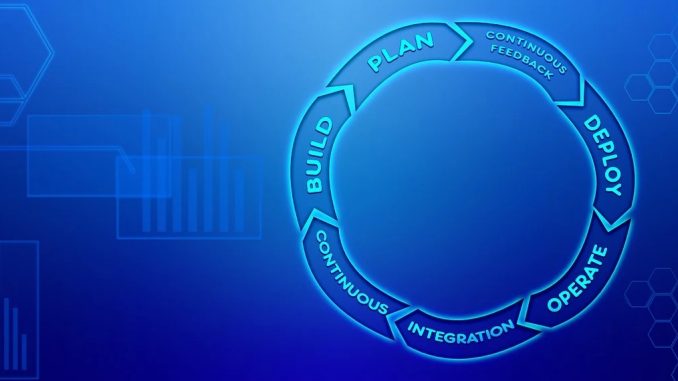Agile software development has become synonymous with efficiency and adaptability in the fast-paced world of technology. It is a methodology that promotes flexibility, communication, and the timely delivery of high-quality products. A significant constituent of Agile is the Scrum approach, a framework used to facilitate team collaboration on complex projects. In this article, we delve into the concept of Agile development, the intricacies of Scrum, and how these paradigms harmonize to revolutionize project management in the software industry.

Understanding Agile Software Development
Before we explore Scrum, it is essential to understand the overarching philosophy of Agile software development. Agile encompasses a software development methodology wherein requirements and solutions progress via the cooperative engagement of self-organizing, cross-functional teams. It promotes adaptive planning, evolutionary development, early delivery, and continuous improvement, fostering quick and adaptable reactions to change.
The Agile methodology contrasts sharply with the traditional waterfall model, which is linear and sequential. In a waterfall model, each phase must be completed before the next phase can begin, and there is no room for changing requirements once the project has commenced. Conversely, Agile is iterative and incremental, allowing for more frequent reassessment and adaptation.
Scrum: The Agile Way to Manage a Project
Scrum is a variation of Agile. It is an iterative and incremental framework for managing complex work such as new product development. Scrum is characterized by cycles or development phases known as sprints, which maximize the value of a product in the shortest possible time. This is especially valuable for companies that develop software for narrowly focused niches, such as legal services: https://spd.tech/legal-software-development-services/. It is highly regarded for its simplicity and flexibility. Despite this, Scrum is challenging to master because it requires team culture and thinking changes.
Core Components of Scrum
Scrum revolves around three primary roles: the Product Owner, the Scrum Master, and the Team Members.
- The Product Owner maximizes the product’s value and the development team’s work. This is achieved by managing the product backlog and ensuring it is visible, transparent, and straightforward, showing what the Scrum Team will work on next.
- The Scrum Master supports the Product Owner by ensuring that all members of the Scrum Team are clear on the goals, scope, and product domain. Notably, the Scrum Master also serves the team as a coach to follow Agile practices and become self-organized.
- The Team Members deliver potentially shippable product increments at the end of each Sprint.
Scrum Events
Key events, also known as rituals, define the Scrum approach:
- Sprint Planning: This event initiates the Sprint by laying out the work for the Sprint. The collaborative work of the entire Scrum Team creates this plan.
- Daily Scrum: Often referred to as a stand-up, this is a 15-minute time-boxed meeting where the Scrum Team coordinates activities and plans for the next 24 hours.
- Sprint Review: Conducted at Sprint’s conclusion, this session is used to review the Increment and make any necessary adjustments to the Product Backlog. This is when the team demonstrates their accomplishments during the sprint.
- Sprint Retrospective: This event allows the Scrum Team to evaluate its performance and devise a strategy for implementing enhancements in the upcoming Sprint.
Scrum Artifacts
Scrum supports several artifacts that encapsulate work or value and are designed to maximize the transparency of critical information. The primary artifacts include:
- Product Backlog: It is an ordered list of everything known to be needed in the product and is the single source of requirements for any changes.
- Sprint Backlog: A set of items selected from the Product Backlog to be completed during the Sprint, along with a plan for delivering the product Increment and realizing the Sprint Goal.
The Advantages of Scrum in Agile Software Development
Scrum enhances Agile’s principles by advocating for time-boxed iterations and incremental software delivery. This leads to several benefits:
- Enhanced Quality: Frequent inspections ensure that defects are routinely caught and resolved quickly, leading to higher quality.
- Increased Control: Regular meetings provide multiple opportunities to inspect and adjust the project’s direction during a Sprint.
- Risk Reduction: Frequent deliveries of “done” increments help to minimize the overall risk, and potential issues are identified and resolved early.
- Improved Return on Investment: The product is developed and delivered incrementally, so it can provide value sooner rather than waiting for a project to be completed.
Challenges and Considerations

While Scrum is robust in its approach, it’s not without challenges. It demands discipline, openness, and respect among team members that not all teams can immediately muster.
- Commitment to Change: Adoption of Scrum can often introduce discomfort as changes take effort and time to become effective.
- Sustained Management Support: With sustained support from management, Scrum practices can maintain old habits.
- Constant Vigilance: Scrum requires diligence, frequent inspections, and adaptation. This can be taxing, but it’s crucial for success.
Successful Implementation Case: Software Development for a Legal Company
Adopting the Scrum approach in Agile software development has benefitted myriad industries, including the legal sector. One notable case involves a mid-sized legal company that aimed to digitalize its client management system to improve efficiency, security, and client satisfaction. Let’s explore how the company successfully implemented Scrum to achieve these goals.
Identifying the Challenge
The legal company faced challenges in handling client cases efficiently due to reliance on outdated technology and manual processes. This not only slowed down operations but also posed risks regarding data security and client confidentiality. The lack of a unified system made client communication and management cumbersome, leading to less-than-optimal client satisfaction.
Engaging in the Scrum Framework
The company embraced Agile software development, focusing on the Scrum approach. It started by forming a cross-functional team that included software developers, a Scrum Master, a Product Owner (from the legal firm), and several consultants with legal expertise. This diverse team enabled a comprehensive understanding of both technical and legal requirements.
Sprinting Towards Success
The team embarked on a series of Sprints, each lasting two weeks. During each Sprint Planning meeting, the team prioritized features that were most critical to the legal company’s operations. Focus areas included developing a secure client portal, automating case file management, and integrating a communication platform for direct client-lawyer interactions.
- Daily Scrums facilitated quick problem-solving and adjustment to development hurdles, ensuring the team remained on track toward their bi-weekly goals.
- Sprint Reviews at the end of each Sprint cycle, stakeholders, including selected clients and senior legal staff, will provide feedback on the software’s development. This iterative feedback was invaluable in promptly addressing the needs and concerns, ensuring the product evolved in the most beneficial direction.
- Sprint Retrospectives enabled the team to reflect on their process, adopting a mindset of continual improvement. This enhanced teamwork and productivity over time, with each Sprint being more efficient than the last.
The Outcome
After several months of rigorous development cycles, the software development project resulted in a robust client management system tailored to the legal firm’s needs. The system featured secure, seamless access to case files, direct communication channels between clients and their lawyers, and automated processes for managing appointments and deadlines.
Conclusion
In the Agile galaxy, Scrum shines brightly as a star, guiding teams toward efficient project management and successful product delivery. It takes the flexibility of Agile and incorporates structure through roles, events, and artifacts, producing a framework that empowers teams to work harmoniously and efficiently. Scrum is not a silver bullet and certainly not the answer to all problems. However, it can be mighty for the right team and project, fostering a collaborative environment where great software is envisioned and delivered.
Organizations are altering their project management techniques by adopting the Scrum approach within Agile software development and transforming their work culture to be more responsive, innovative, and quality-oriented. Scrum’s continuous improvement and learning journey makes It an adventure worth embarking upon for any software development team committed to excellence.

